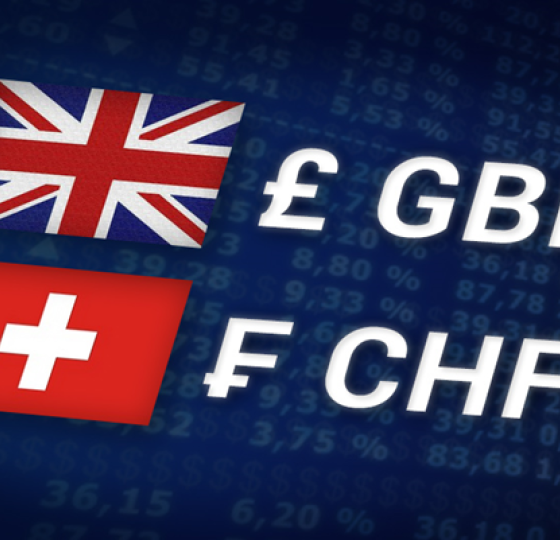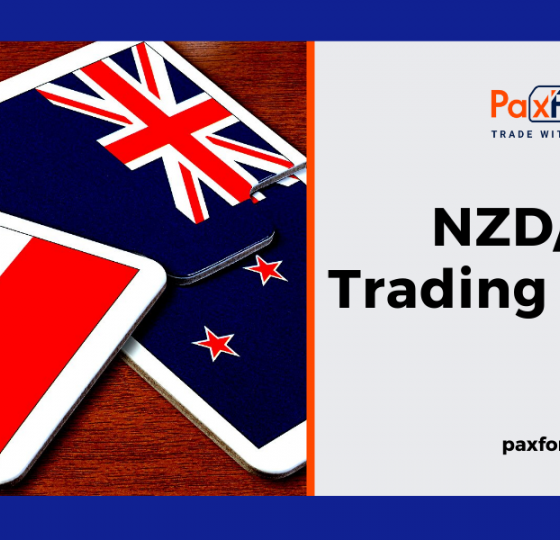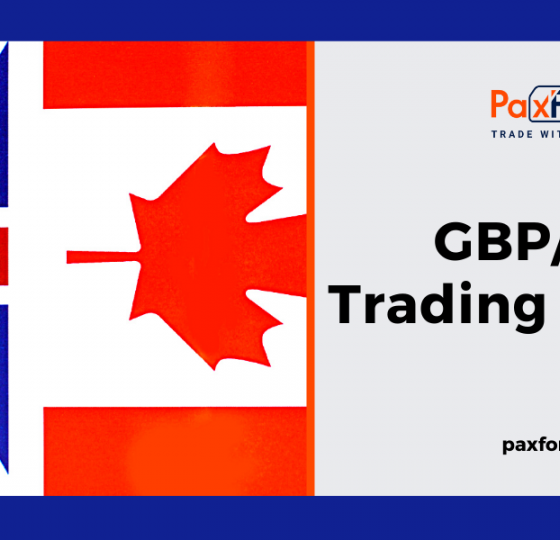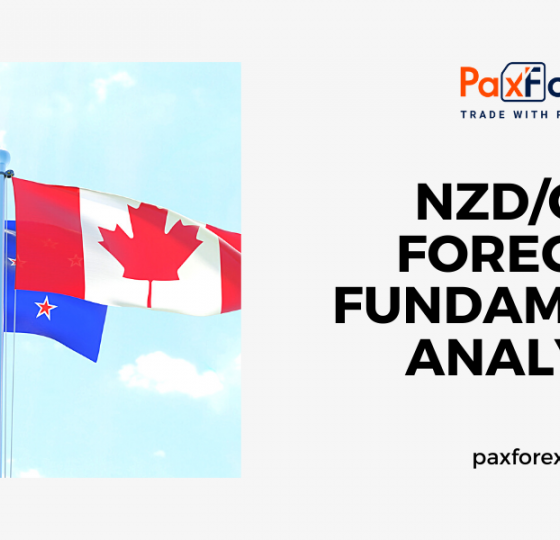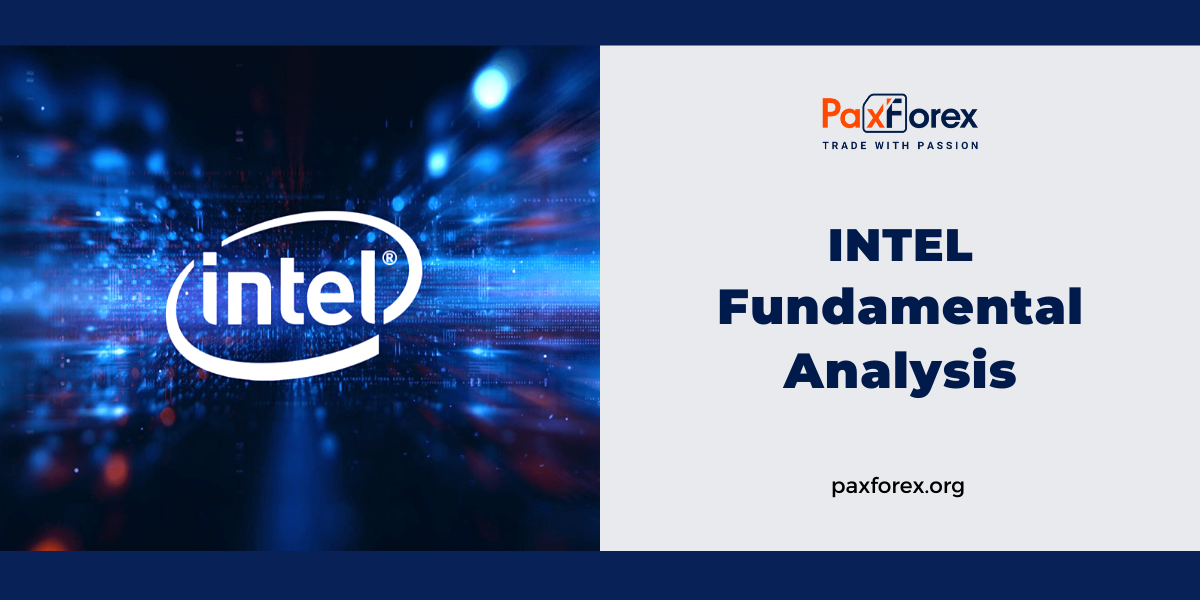
Source: PaxForex Premium Analytics Portal, Fundamental Insight
Intel has barely covered its costs since the start of 2020 and has been the worst-performing chip maker with significant capital in the past year. Most of its competitors have doubled over the same period, and shares of several large chip makers have more than tripled.
The main reason for Intel's mediocre bad luck is that updates to the company's manufacturing processes are not going well.
Historically, Intel's own production lines have tended to outperform competitors and third-party chipmakers. This advantage has allowed the company to produce next-generation products ahead of its main competitors -- Advanced Micro Devices, NVIDIA, Qualcomm, and Samsung. More advanced chip manufacturing processes can lead to more powerful processors and notable cost savings.
Intel's last two manufacturing upgrades have been complicated and paused, providing the rivals a chance to turn things around and fight from a stronger position recently. Experts see AMD taking bread away from Intel in the data center, while Nvidia and Qualcomm are advancing in other Chipzilla strengths such as high-speed networking and automotive computing.
Of note, CEO Pat Gelsinger, who took over at the beginning of 2021, laid out his proposal on March 23 to return the business to its past majesty.
Instead of succumbing to pressure from activist investors and winding down its manufacturing operations, Intel is doubling down on what is seen as a key ambitious benefit. Intel will continue to produce most of its products in-house, thanks to a $20 billion investment in two new plants in Arizona.
These new plants will also boost Intel's new foundry services division. Intel has proposed to make some chips for other businesses previously, but those attempts did not succeed.
"Our preceding efforts have been somewhat superficial," Gelsinger said in a presentation to experts, according to Bloomberg.
This time Intel seems fully prepared to become a dominant performer in the foundry business. The company will be able to provide production facilities in the U.S. and Europe, and customers will be able to take advantage of Intel's portfolio of intelligent designs, including its x86 cores.
Given Intel's previous failure to grow its foundry business, as well as its long struggle with manufacturing, the push to offer foundry services may seem surprising. But considering how successful TSMC has matured, it does make sense.
Intel's core PC and server chip business is highly profitable, even with its manufacturing missteps. In the fourth quarter of 2020, the company had $20 billion in revenue, a gross margin of 56.8%, an operating margin of 29.5%, and a net income of $5.9 billion. Intel is still a cash aggregate.
In the past, it didn't make sense to use production capacity to make chips for third parties when it was more profitable to use that capacity for its own chips. But things have changed. Intel's earnings are majestic, but so is foundry market leader TSMC.
TSMC reported revenues of $12.1 billion for the last quarter, up 29% from the previous year. The company managed a gross margin of 53.4% and an operating margin of 42.1%, resulting in a net profit of about $4.8 billion. In other words, TSMC is making almost as much net profit as Intel on fairly lower revenues, solely by making products for other companies.
If Intel gains in becoming a major foundry service provider, margins could better, given how profitable TSMC has become. Intel faces many challenges: its manufacturing difficulties remain, competitors may not want to turn to Intel for manufacturing, and it will take a huge investment to cope with the manufacturing leadership that TSMC has created. But the foundry business could be very profitable for Intel in the long run if things go right.
Companies that abandoned semiconductor manufacturing, including AMD and IBM, did so because the investment needed to stay competitive simply didn't make sense given the volume of chips those companies were producing. If Intel had stuck with just manufacturing its own products, it might have ended up with the same problem. By offering foundry services, Intel could make sure that it had enough volume flowing through its factories to be able to make the massive investments needed to keep up with TSMC.
Intel's push into the foundry business may seem odd given its recent struggles with manufacturing, but it may be the only way to explain the huge investments Intel will have to make to recover its manufacturing advantage. And foundry services could become a highly profitable business for Intel if all goes according to plan.
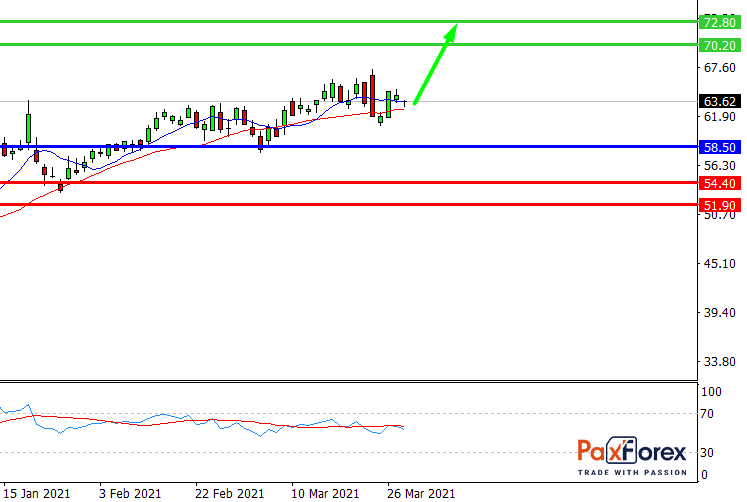
Provided that the price is above 58.50, follow these recommendations:
- Time frame: D1
- Recommendation: long position
- Entry point: 64.00
- Take Profit 1: 70.20
- Take Profit 2: 72.80
Alternative scenario:
In case of breakdown of the level 58.50, follow the recommendations below:
- Time frame: D1
- Recommendation: short position
- Entry point: 58.50
- Take Profit 1: 54.40
- Take Profit 2: 51.90


